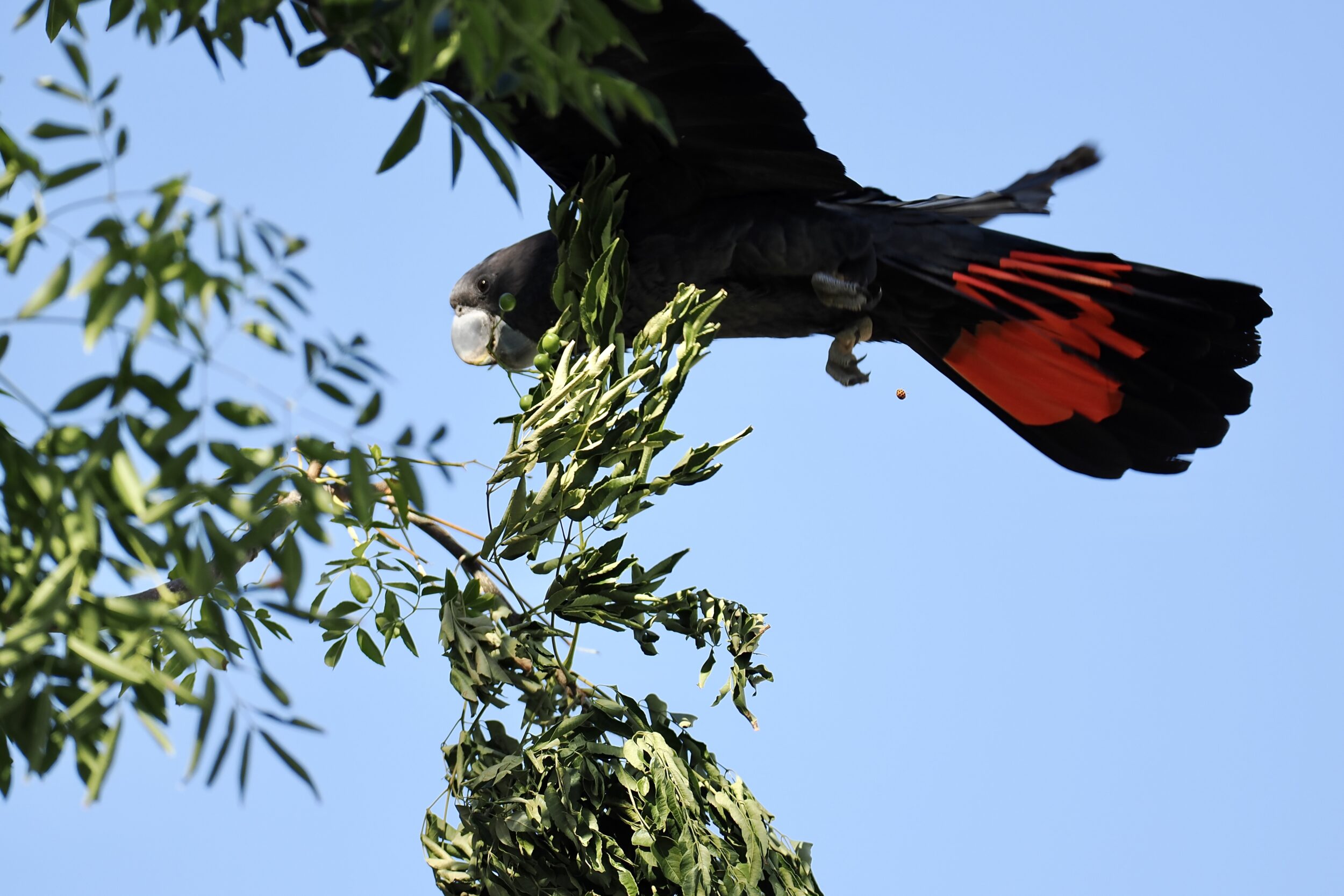Unmistakably, the pictured individual is an adult male Forest red-tailed black cockatoo.
The tree he is trashing (but fear not: in the longer run, the apparently “ravaged” tree will in fact be all the healthier for the cockatoos’ efforts) is less than one minute’s walk from where I am currently sitting, at home.
Opinions differ as to whether one gender is more handsome/beautiful than the other – and if so, which one – but all well-informed observers of any adult red-tails will never have any difficulty in determining their gender.
Adult males’ plumage is mostly “basic black”, except for the very clearly-defined “solid” red sections of their tail feathers.
As previous images have already shown (and future ones will illustrate in much fuller and finer detail) females’ plumage is much more variegated.
In today’s image – just below and behind our hero’s feet – you can see an object, falling.
It is, I think, a Cape Lilac’s seed, discarded immediately after the red-tail had devoured the fruit in which that seed had been embedded.
Photo is copyright Doug Spencer, taken in a West Leederville lane at 11.07 am on 04 May 2023.

hii Doug
i’m really enjoying this cockatoo series!
I wonder if you also noticed that this male bird appears to have an out of character beak colouring – to my knowledge males generally have a charcoal colour beak
I once had a regularly visiting cockatoo that was very obviously part way through its transition to adult tail feather colouration – one side very distinctly solid colour and other half striped newly fledged colouration.as it perched in my yard
The BlackCockatoo family who seasonally frequent watering stations here have once again successfully brought their second fledgling of the season- I wonder if the particular family group ‘time share’ ‘their’ nest site
hope you’re having a splendid time